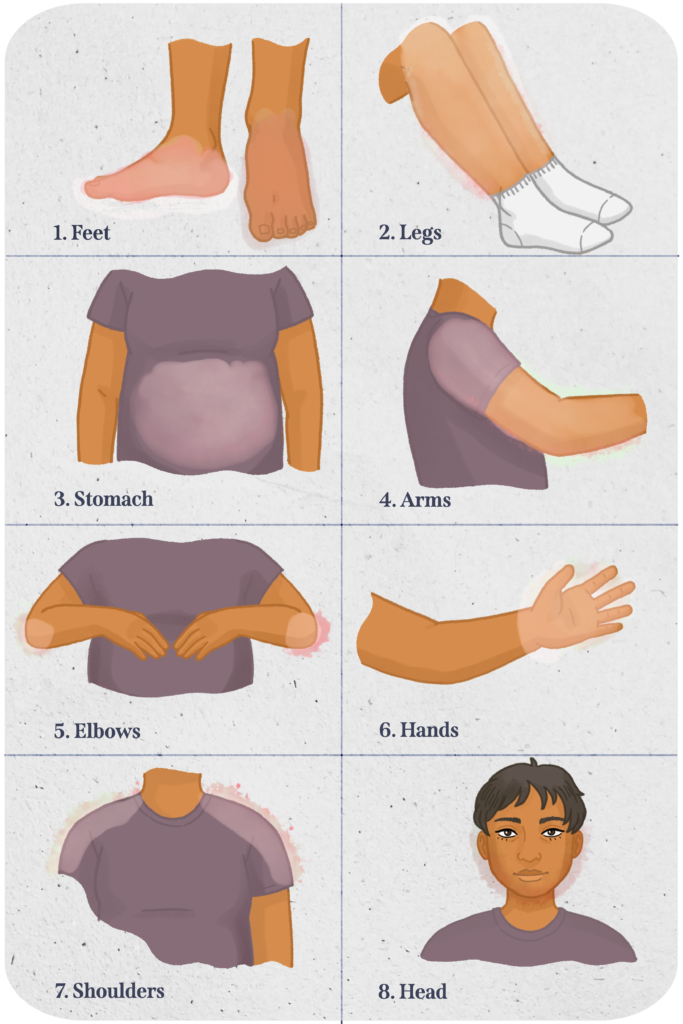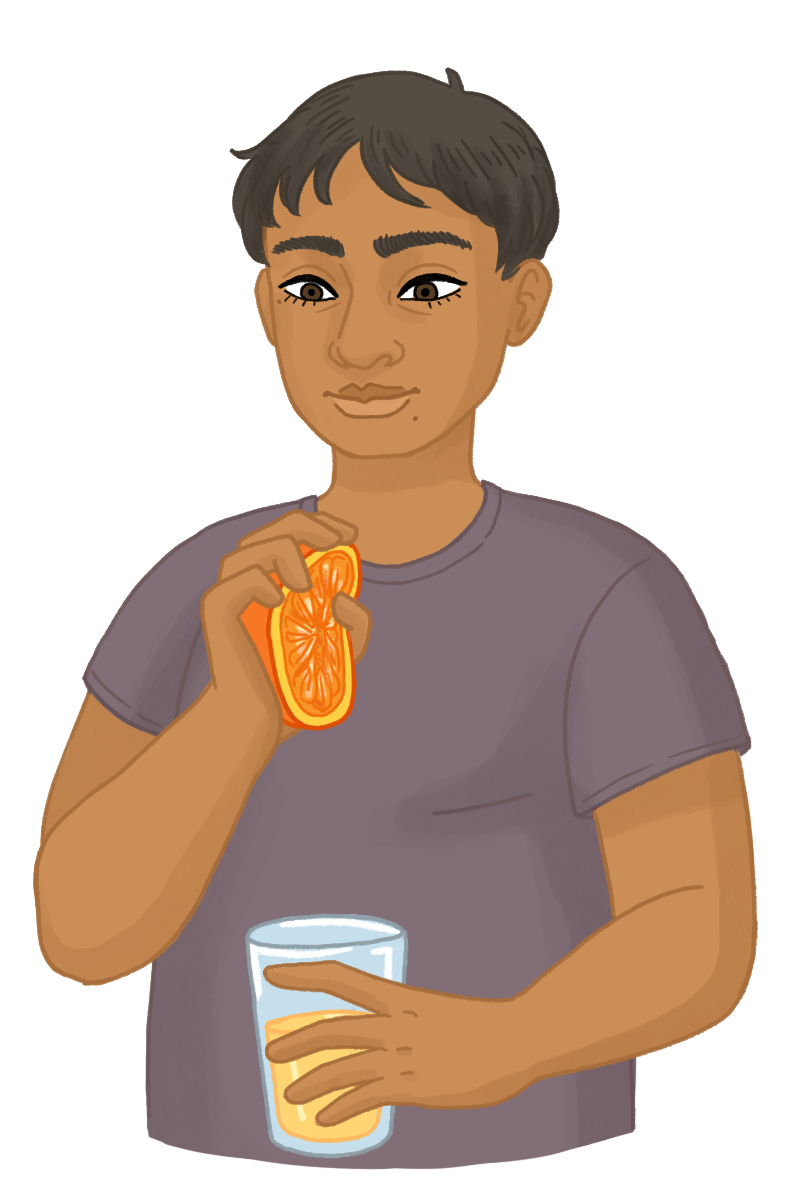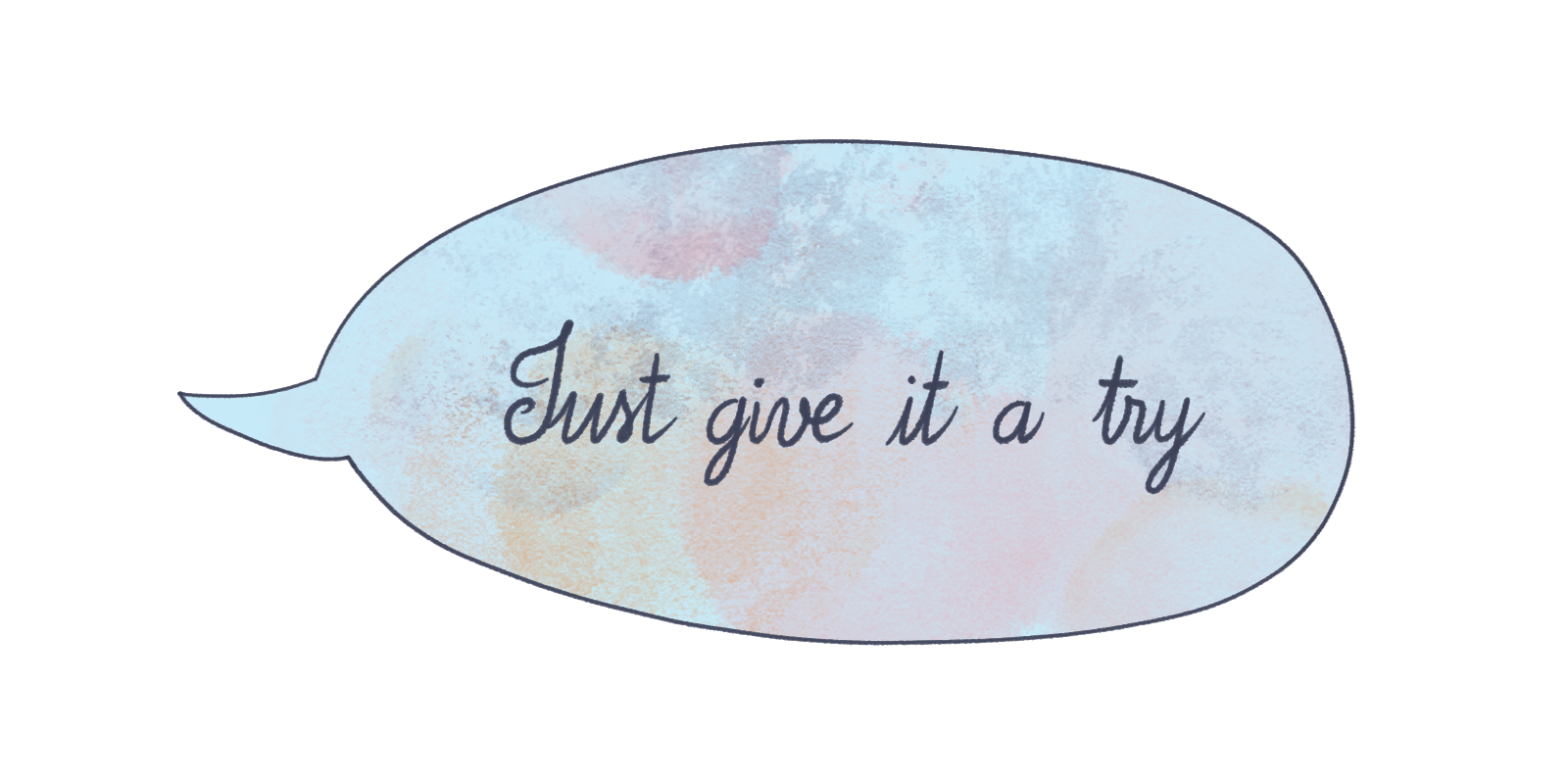





Progressive Muscle Relaxation Copy
The main purpose of the progressive muscle relaxation exercise is to teach children the difference between a tense and relaxed muscle or body state because tense muscles may be a signal of the stress response. This exercise also helps increase general awareness of the body state.
Have the child sit comfortably, feet flat on the ground, and arms relaxed. Then lead the child through the major muscle groups, first contracting them for 10 seconds, then relaxing them, one by one: feet, legs, stomach, arms, elbows, hands, shoulders, and head (i.e., jaw, face).

Repeat the exercise for each muscle group three times, working up the body beginning at the feet all the way to the head.
Some child-friendly imagery to use might include pretending to dig your toes in the sand (for feet), squeezing lemons or making juice (for hands), or pretending like eating something sour (for face).

Some children experience difficulties completing this exercise because they are not in tune with their body or do not have awareness of what is happening. If that is the case, you can say, “Just give it a try. If you practice and still feel like this is not for you, we have other choices. That is exactly why we are learning different tools, so you can pick and choose. One tool might work for one person or one situation but might not work for others.”

Children that express somatic symptoms of trauma might be sensitive to progressive muscle relaxation in a particular muscle group—for example for Nelson it is his calves—because it can be a trauma reminder. Never push children into activities that might elicit a trauma symptom at this stage of treatment.
Progressive Muscle Relaxation Exercise
Practice this progressive muscle relaxation exercise for 4–5 minutes. How do you feel? Do you notice any changes in your body?
